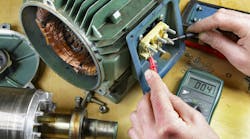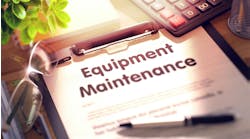In one building of the four buildings at your manufacturing facility, motors fail regularly. At the other three, the motor failure rate is much lower. The normal procedure in all four buildings is to replace the failed motor with a freshly lubricated one and check the power for voltage imbalance. The old motors are sent to a facility that scraps them out and pays the plant a small recycling fee.
A lift truck operator who has been involved in sending several failed motors to the scrap collector noted that some of the old motors make a rattling sound when moved, and others are impossible to turn by hand. This prompted the plant engineer to have a mechanic and electrician take a couple of these apart. In both cases, the bearings were completely demolished.
What might be causing these site-specific bearing failures?
Install vibration monitoring on most motors so you can catch an emerging bearing problem. After you send a few failed motors to a motor shop for analysis, you will likely find the main culprit.
Possible causes you can remedy immediately include:
- Incorrect lubrication practices. Check that the right amount of grease is used, incompatible greases are not used, and the correct method (as opposed to simply pumping in grease) is used.
- Improper bonding. The result is the circulation of undesired current, much of which will flow through motor bearings and destroy them. This problem is potentially lethal; you need to methodically check and repair bonding problems circuit by circuit and/or equipment by equipment.
- Power quality defects. These may generate enough heat to cook the grease right out. Use a power analyzer to find them.




